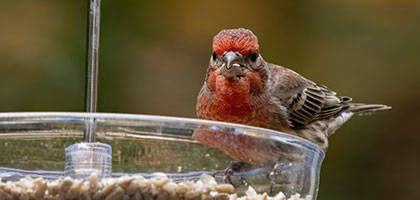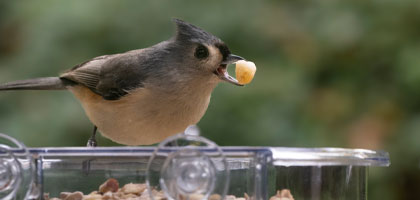Birdwatching is a rewarding hobby. It brings us closer to nature and offers a peaceful retreat from our busy lives.
But how can you attract more birds to your garden for birdwatching?
This guide will provide practical tips and bird feeder ideas to help you create a bird-friendly environment. You'll learn how to use native plants, diverse food sources, and water features to attract a variety of bird species.
We'll also discuss the importance of safe feeder placement and providing nesting support.
By the end of this guide, you'll have the knowledge to transform your garden into a birdwatching paradise. Let's get started.
Understanding Bird Attraction Basics
Attracting birds to your garden for birdwatching starts with understanding what they need. Birds look for food, water, shelter, and safe nesting places.
Here's a quick checklist to get started:
- Provide food sources like seeds, insects, and fruits.
- Create reliable water access with birdbaths or fountains.
- Ensure shelter with trees, shrubs, and birdhouses.
- Keep your garden free of harmful chemicals and predators.
By addressing these basic needs, you'll make your garden irresistible to birds. Once these essentials are in place, you can enjoy more frequent bird visits.
Creating a Bird-Friendly Habitat
A bird-friendly habitat is vital for attracting a variety of bird species. Birds thrive where they feel secure and find abundant resources.
Start by offering diverse elements in your garden. This includes various plants, structures, and ecological features. Here's a helpful list:
- Choose native plants to attract local birds.
- Add different feeders for diverse bird diets.
- Create shaded areas and windbreaks with shrubs.
Consistency in these efforts ensures that birds find your garden inviting. As you develop your space, you'll see an increase in bird activity.
Plant Native Flora
Native plants are crucial for drawing local birds to your garden. They provide natural food, nesting sites, and shelter.
By planting indigenous species, you attract birds that are naturally drawn to their preferred environment. Native plants also require less upkeep, thriving on local conditions.
Using native flora supports not only birds but enhances your garden’s biodiversity. This native approach forms the foundation for a thriving bird habitat.
Offer Diverse Food Sources
Birds appreciate a variety of food options in your garden. Offering different food types attracts different bird species.
Consider these options:
- Seeds for sparrows and finches.
- Fruit for thrushes and robins.
- Suet for insect-eating birds.
Providing an array of foods caters to the dietary needs of varied species. Diversifying food helps draw more birds consistently throughout the year. Ensure that feeders remain stocked for regular visits.
Provide Fresh Water Features
Adding fresh water is essential for a complete bird-friendly habitat. Birds need water for drinking and bathing.
A birdbath or fountain offers the perfect solution. Running water is especially attractive, as birds are drawn to its sound and movement. Position these features in open but safe spots.
Make sure to change the water regularly to keep it clean. Clean water not only entices birds but ensures their well-being. Including water features elevates your garden’s appeal to our feathered friends.
Safe and Strategic Feeder Placement
Placing bird feeders thoughtfully can make a big difference in attracting birds safely. Feeders should be accessible but out of easy reach for predators.
Install feeders at least five feet off the ground and near shrubs for cover. This ensures birds can quickly escape if needed. Avoid areas where cats or other predators might hide and ambush.
Ensure feeders are placed away from windows to prevent collisions. A clear, open space around feeders provides birds with secure landing spots. Strategic feeder placement invites more bird visits while keeping them safe from harm.
Types of Bird Feeders and Ideas
Selecting the right bird feeders adds variety to your birdwatching experience. Different feeders attract different species, meeting their specific feeding habits.
Consider these feeder ideas:
- Hopper feeders: Attract larger birds with seeds.
- Tube feeders: Great for small birds like finches and chickadees.
- Suet feeders: Ideal for woodpeckers and nuthatches seeking high-energy food.
Offering an assortment of feeders entices a wide range of birds. By providing diverse feeding options, you ensure your garden meets the dietary needs of many species. This diversity enhances both birdwatching enjoyment and bird abundance.
Shelter and Nesting Support
Creating a safe haven with shelters boosts your garden's appeal to birds. Offering diverse nesting spots helps birds feel secure and welcome.
Incorporate birdhouses, bushes, and dense shrubs to provide protection from harsh weather and predators. These elements allow birds to nest comfortably. Choose different sizes and styles of birdhouses to cater to various bird species. Ensure they are placed at safe heights to avoid disturbances.
During nesting seasons, birds seek tranquil spaces to lay and raise their young. A well-designed habitat supports bird families and encourages repeated visits year after year.
Importance of Nesting Materials
Providing nesting materials is crucial to support bird breeding. Materials like twigs, leaves, and soft grasses help birds construct durable nests.
Scatter these items naturally around your garden to offer easy access. This small gesture significantly enhances your garden's allure for nesting birds.
Maintaining a Healthy Birdwatching Environment
Ensuring a healthy environment in your garden is vital for sustaining bird activity. Cleanliness is key to providing a safe space for birds. Regular care and good practices keep diseases at bay and encourage thriving wildlife.
To maintain this health, consider these actions:
- Regularly clean bird feeders and birdbaths.
- Avoid using pesticides and harmful chemicals.
- Provide a variety of seeds to cater to different bird diets.
Implementing these strategies ensures your garden remains a welcoming oasis for birds. A clean environment attracts more species and supports vibrant bird populations.
Regular Cleaning and Disease Prevention
Consistent cleaning of bird feeders and birdbaths is fundamental in preventing disease. Dirty feeders can harbor bacteria, endangering your feathered visitors. Thoroughly wash feeders with warm, soapy water every two weeks.
This practice eliminates harmful residue and promotes bird health, ensuring your garden remains an inviting habitat year-round.
Engaging with the Birdwatching Community
Connecting with fellow bird enthusiasts enriches your birdwatching experience. Join local birdwatching groups or online communities to share sightings and tips. Community involvement offers learning opportunities and fosters collective efforts toward bird conservation, enhancing both personal knowledge and communal appreciation for nature's wonders.
Conclusion: Patience and Consistency
Attracting birds requires time and steady effort. Be patient as you implement these strategies in your garden. Consistency in maintaining your habitat and feeding routines will gradually draw birds, rewarding you with delightful birdwatching moments as they become regular visitors to your garden sanctuary.




